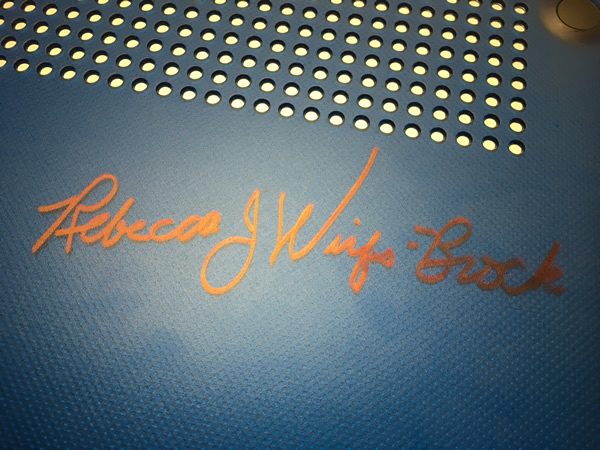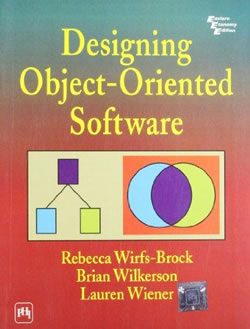
Of course I got her to sign my laptop.
I accompanied Anitra to the Women in Agile session that took place yesterday at the site of this week’s Agile 2017 Conference in Orlando. While she attended the session, I continued with getting caught up on a freelance project at the hotel’s coffee shop.
After the session, I remarked to Anitra that I had a look at the conference schedule and saw that one of the speakers was Rebecca Wirfs-Brock. “I pretty much learned object-oriented programming from her and Scott Ambler.” (It turns out that he’s also speaking at the conference.)
You have to remember that in the mid-1990s, internet access outside an academic or government organization — if you had it — was done via dial-up modem, search engines were in their infancy, you got your software tools — even if they were free-as-in-beer — from dedicated stores (I used to buy mine at “Developer’s Workshop” in Toronto) or mail order, and if you wanted to learn a new programming language or paradigm, your best option was dead-tree books. I learned a lot about oriented design from Designing Object-Oriented Software, which she co-wrote in 1991, and some noodling with CodeWarrior on my first Mac, a Quadra 660AV.
“She was sitting at my table at Women in Agile!” Anitra said. “Do you want to meet her?”
“Yes, please!”
And so Anitra led me to Rebecca, and we had a wonderful conversation in the conference center lobby, largely about:
 How I’d graduated from computer science before object-oriented programming was being taught to computer science undergrads, so I’d learned a lot of it from her book, and later, the original pre-UML edition of Scott Ambler’s The Object Primer. (It occurred to me later the edition of Rebecca’s book that I owned was an “Eastern Economy Edition” that I’d bought in the Philippines as I was still making “first job out of school and working at indie software company making interactive CD-ROMs” wages.)
How I’d graduated from computer science before object-oriented programming was being taught to computer science undergrads, so I’d learned a lot of it from her book, and later, the original pre-UML edition of Scott Ambler’s The Object Primer. (It occurred to me later the edition of Rebecca’s book that I owned was an “Eastern Economy Edition” that I’d bought in the Philippines as I was still making “first job out of school and working at indie software company making interactive CD-ROMs” wages.)- Applying the things I’d learned about OOP from her to Lingo, the object-oriented programming language of Macromedia Director that I used for developing CD-ROM software at Mackerel Interactive Multimedia and teaching the most unlikely people about CRC cards.
- The need for a return of the prominence of software design — called software architecture these days — and the need to encourage developers, who are so focused on unit testing, to get back into big-picture thinking when building software. I suggested making them watch episodes of the UK edition of Ramsay’s Kitchen Nightmares, because at their core, they’re entertaining examples of designing practical, functioning systems that meet customer needs and expectations.
- What other big names from the object-oriented world of the 1990s are up to these days.
At the end, I did what any good computer science fanboy would do: I took out a sharpie, and asked her to autograph my computer.